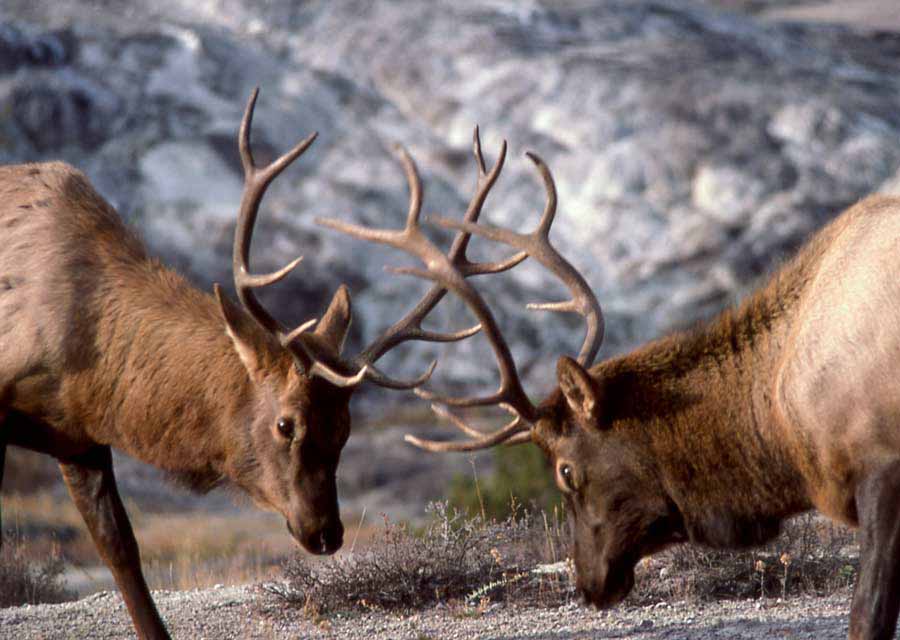
A pair of bull elk square off in Yellowstone National Park during the fall rut. (NPS photo by J. Schmidt)
From Staff Reports
Fall in Yellowstone National Park is beautiful, as the colors change and paint the park in blazes of red, orange and yellow. But it’s also the time to catch bull elk sparring for mates and grizzly bears gorging before hibernation, all without the traffic or crowds of summer.
“Fall has a different feel to it, and it is apparent with changes in animals’ behavior,” said Daniel Bierschwale, director of sales and marketing for the Yellowstone Association. “It is also a great time to hike the trails and explore parts of the park most people never see.”
The nonprofit Yellowstone Association Institute announced available spaces for many of its fall programs Wednesday, highlighting an array of educational activities ranging from backcountry day hikes to a detailed look at raptor ecology.
The Institute is part of the Yellowstone Association, a cooperating partner of the National Park Service that works to connect people with Yellowstone through education, focusing on field activities within the park.
That includes the popular Lodging and Learning series, where visitors stay in historic park properties at night and venture out to learn about nearby wonders during the day.
This fall’s Lodging and Learning program, Roosevelt Rendezvous, takes place in September after the historic Roosevelt Lodge is closed to the general public for the season. Up to 52 participants will stay at the lodge, located in the Tower-Roosevelt area in the northeast quadrant of the park, for four nights. During the day they split up into groups led by Institute naturalists guides as they enjoy wildlife watching and forays into areas with Yellowstone’s renowned thermal and geologic features. They will then reconvene at the end of the day for dinner and the opportunity to compare notes.
A series of field seminars throughout September, launching each day from Gardiner, Mont., offer a chance to hike the park’s backcountry and view wildlife.
Raptors Over Yellowstone will feature classroom sessions devoted to viewing images of raptors and discussing the ecology of each species, followed by trips to Hayden Valley, where participants and their leader will discuss the fine points of raptor identification and compile lists of the various species they observe.
Autumn Day Hiking in Yellowstone lets participants explore the park on daily hikes of 8-12 miles, with elevation gains of up to 2,000 feet. Along the way, their guide will share her expertise on the park’s geology, plant life and history while being constantly on the lookout for the park’s many animal species.
Participants in Autumn Wildlife Watching will spend three full days in the field observing as many species as possible. During the fall, elk are returning to lower elevations with bull elk sporting full sets of antlers and competing for the attention of the females during the rut. Bears are entering their hyperphagia phase, and are ingesting large amounts of calories in preparation for hibernation. Wolves are more commonly spotted too, as they follow the patterns of the elk.
Participants in field seminars have the option of staying at the nearby Yellowstone Overlook Field Campus featuring two 3-bedroom, 2-bathroom log cabins for up to 12 people, and a 2-bedroom, 1-bathroom cabin for up to five people. Field Seminars are limited to 12 participants.
Learn more about Yellowstone Association Institute programs by calling 406-848-2400 or visiting the Association website at www.yellowstoneassociation.org.
